Florence, an impression
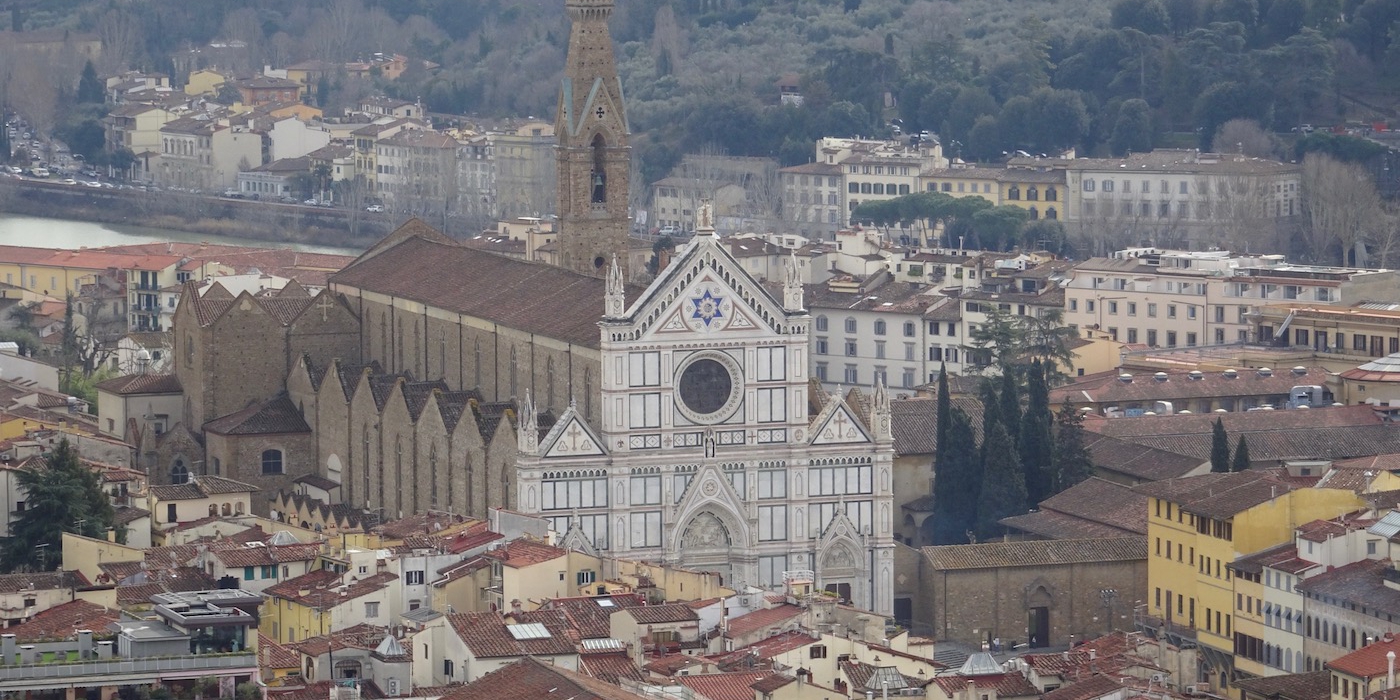
For a week I walked the streets of Florence, visited churches and museums and got impacted by the deep devotion to a certain Christian worldview. intensity of art and by the Christian worldview of that time. And I learned how Florence also contributed greatly to the birth of Humanism.
It is because of the book of The poetic prince by Kathleen McGowan. It is a historical novel in which Florence and the Medici family play an important role in holding up the legacy of Mary Magdalene and her life with Jesus. It was the second time I read it and I felt I had to go to Florence. A week later I booked my trip, by train. My first impression: A busy, noisy town, high houses, narrow streets whit a lot of traffic and many people on the streets. My hotel is just two minutes away from the Duomo that immense cathedral.
The Duomo and Baptisterium
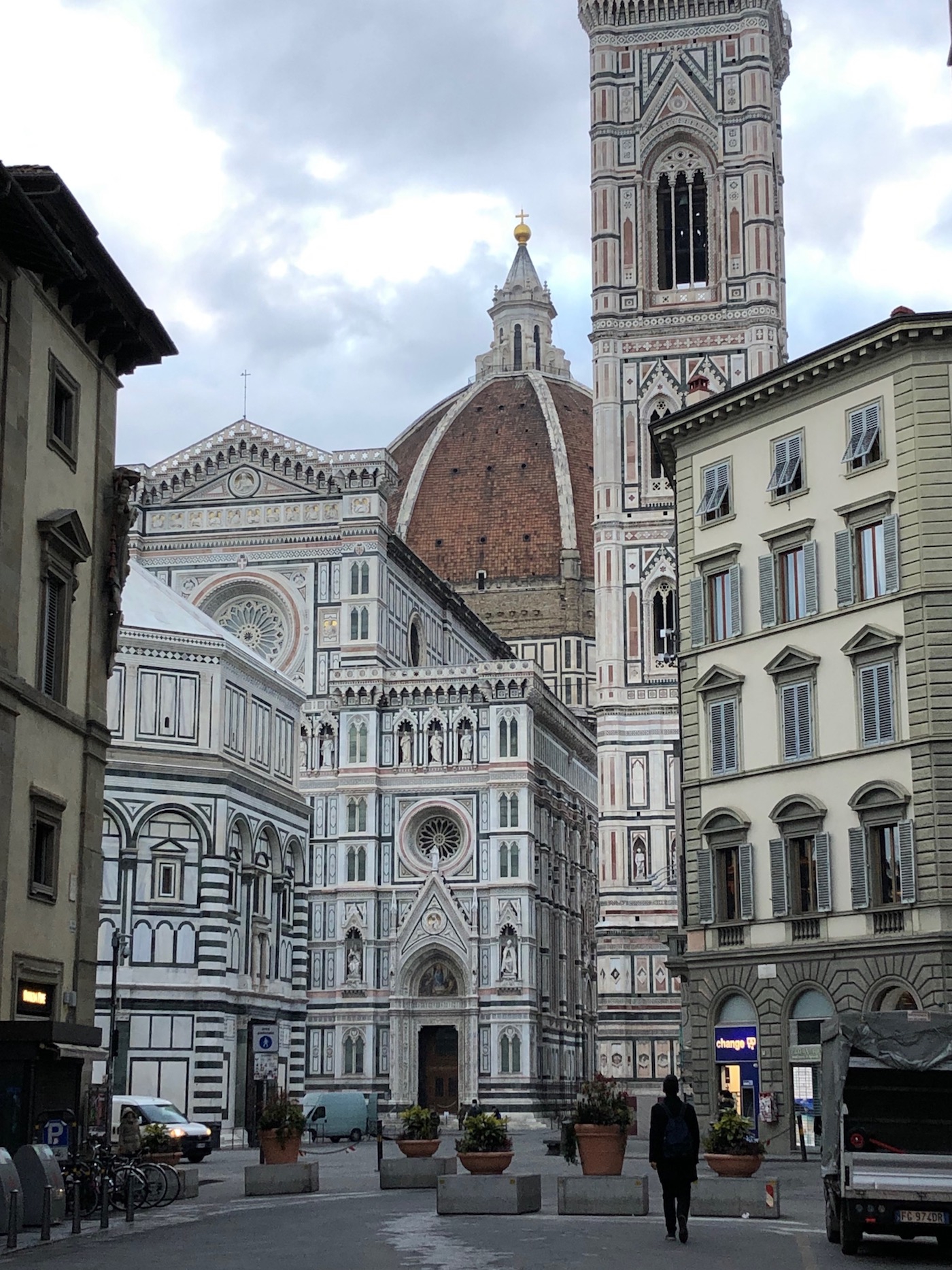

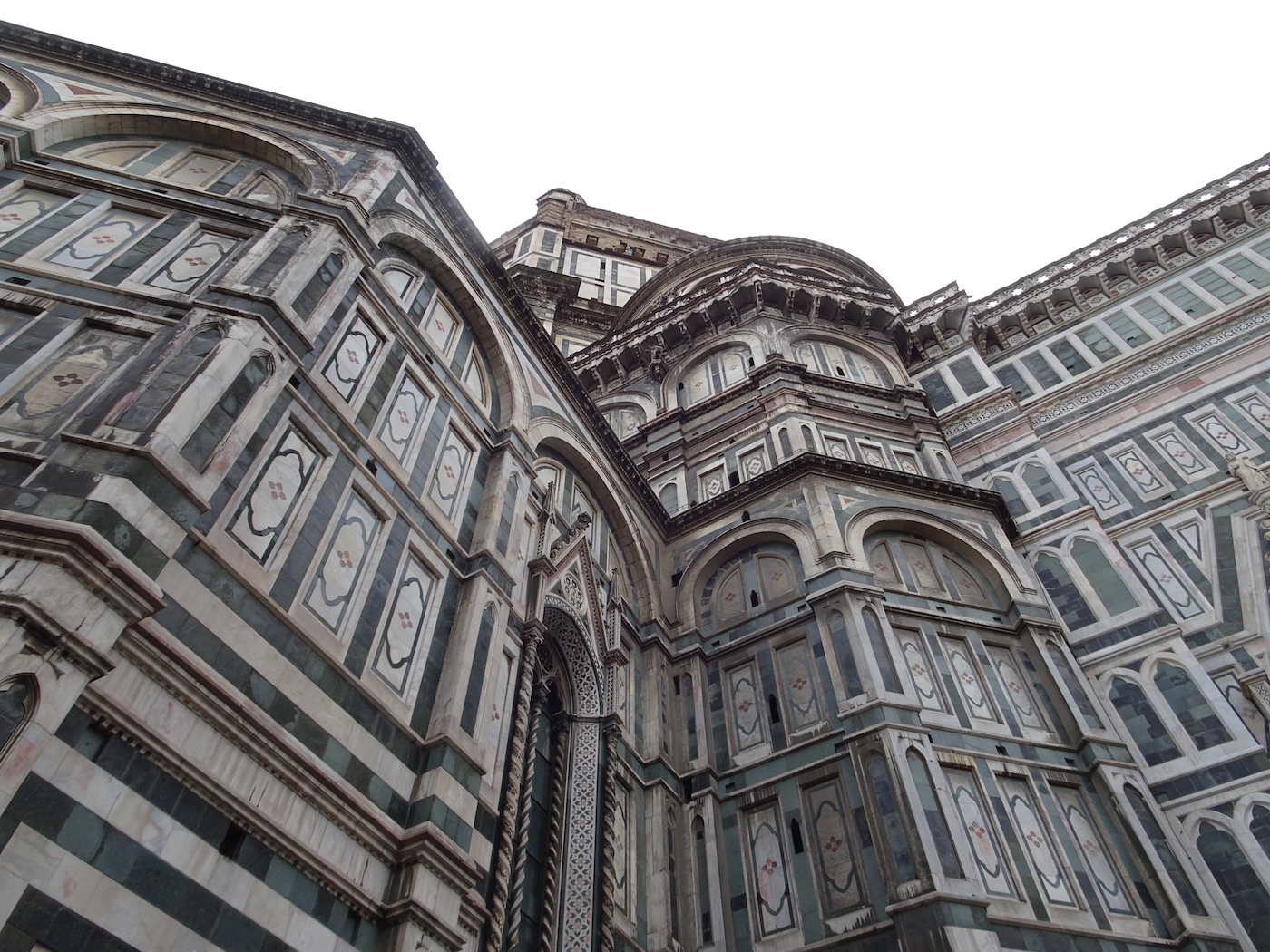
Climbing the Dome
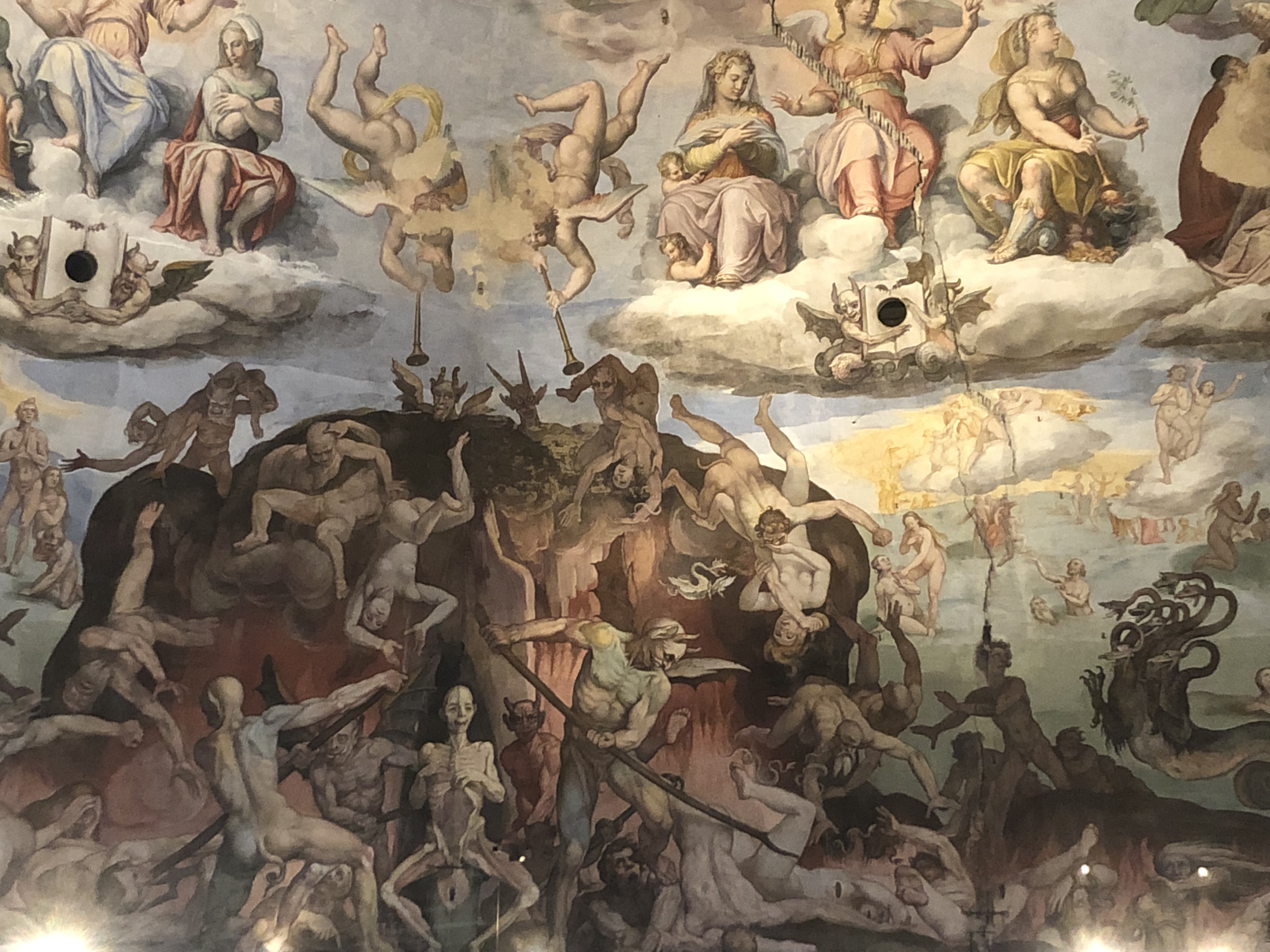


The Bargello
The Bargello once housed the capitano del popolo, who ruled the city in name of the people after the nobles were banned form the government in 1250. Now it is a museum, built around an inner courtyard as many of these medieval mansions.
Some of my favourites here:
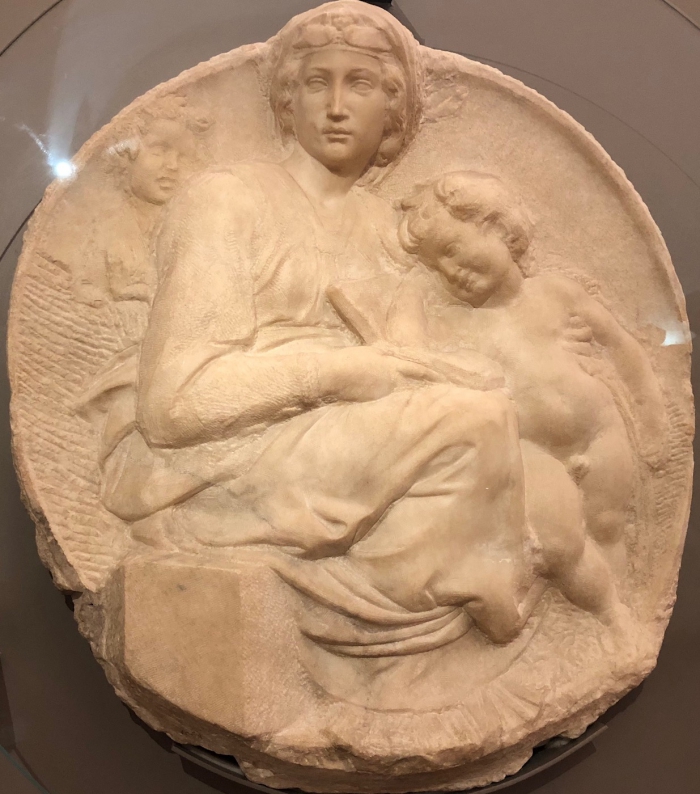
A 'tondo' by Michel Angelo
And the Mother of Mercy, with so many children in her cloak.
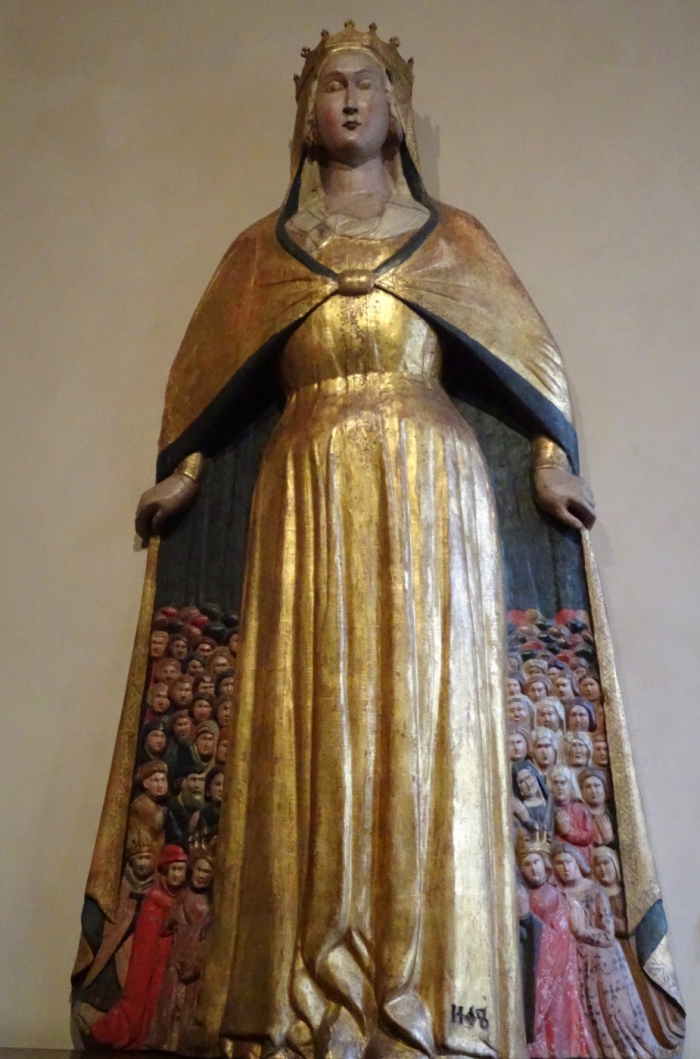
And another Beauty:
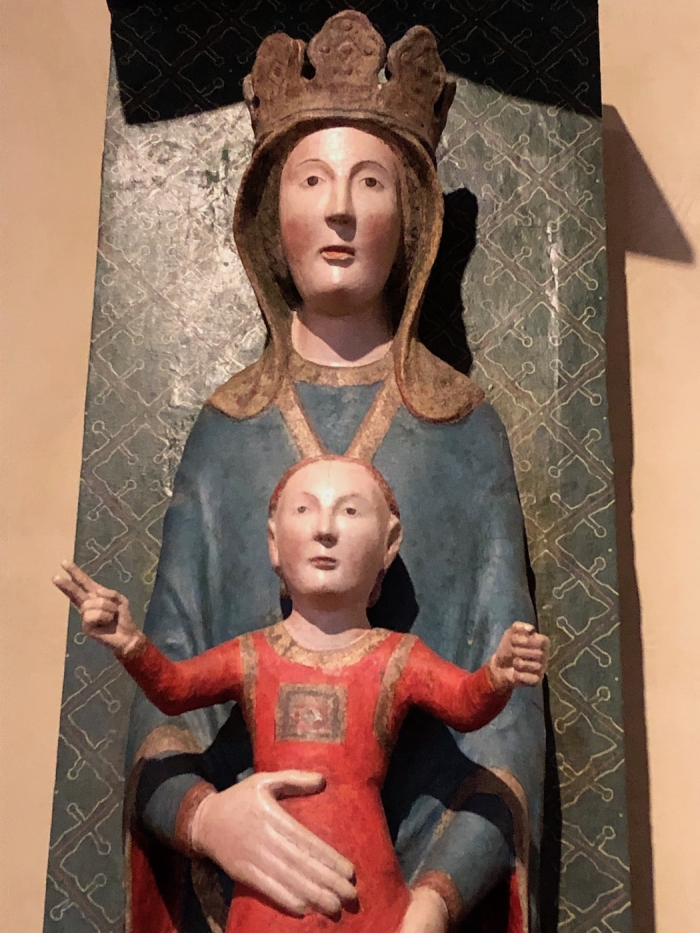
Mary Magdalene
It is interesting to find Mary Magdalene on so many paintings. Often she is portrayed at the cross as in this beautiful detail of a painting by Bernardo Daddi, 1343:
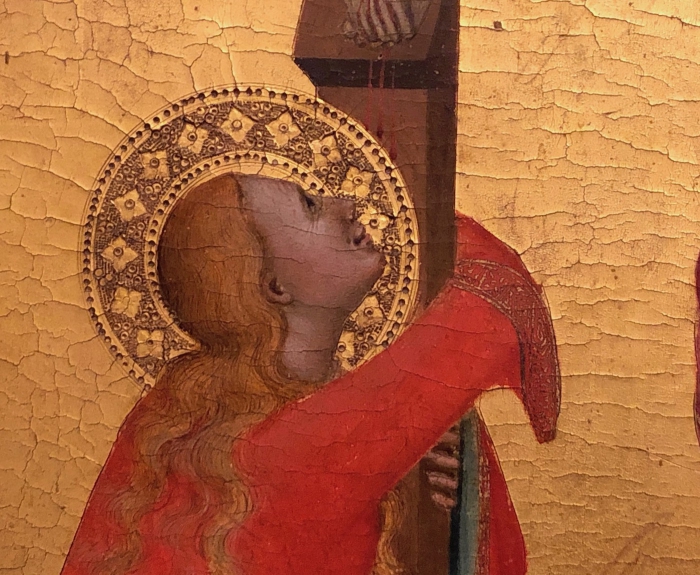
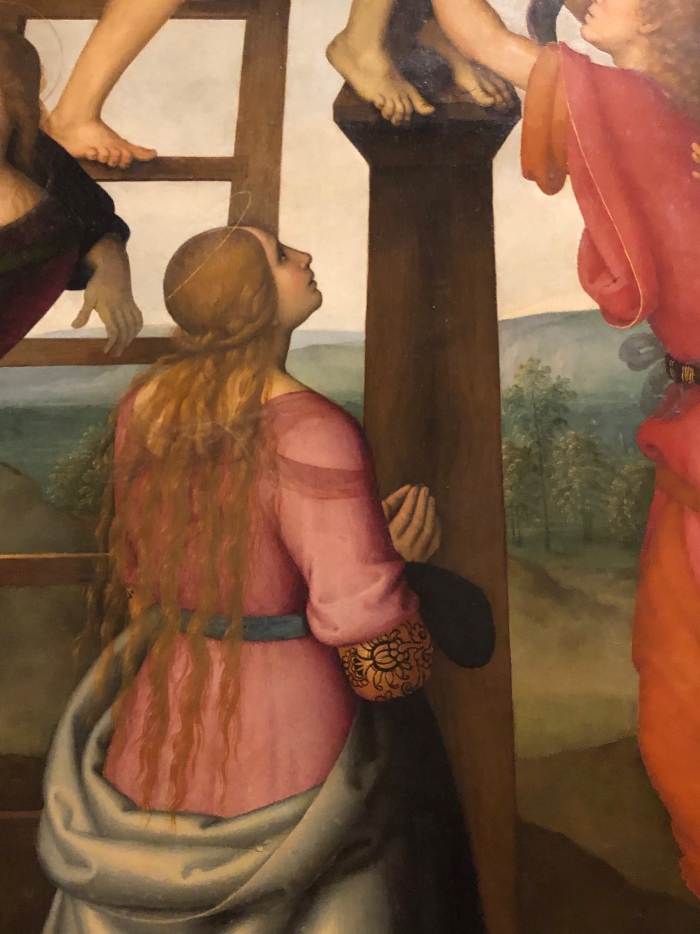
Both are visible in the Galleria della academia, as are these ones: Mary Magdalene as sinner, by an unknown artist around 1285.
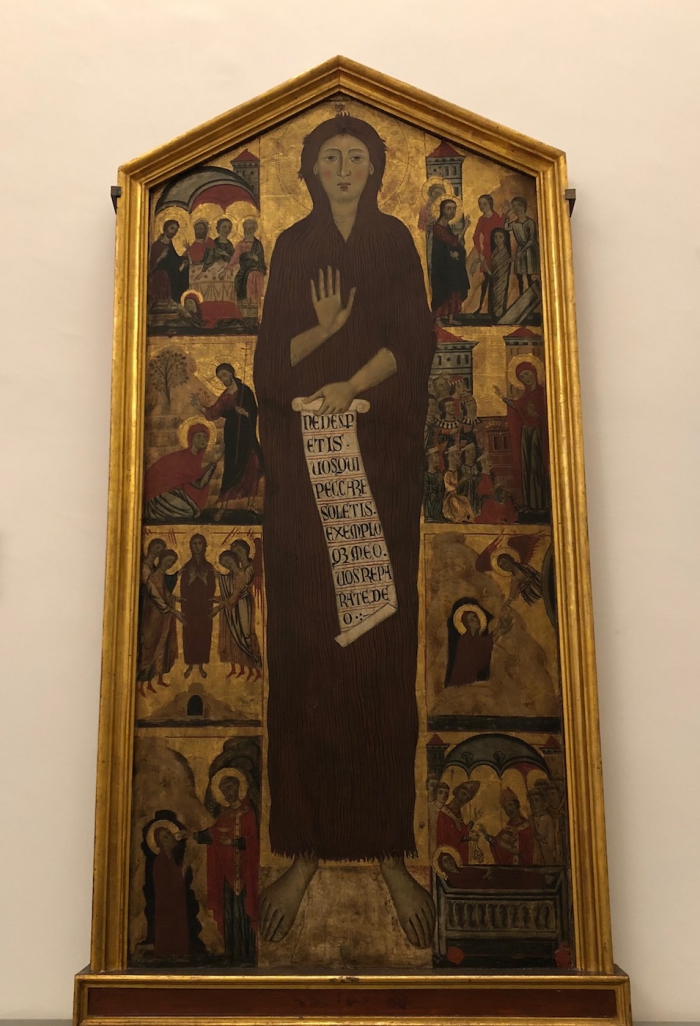
And as saint, a detail of from a painting with Madonna with Child and saints by an unknown artist, 1340.

San Marco church and convent
There is a very gentle statue of Jesus, made of wood, that touched me in the San Marco church, on the San Marco Piazzo. I did not write down the name of the sculpture.
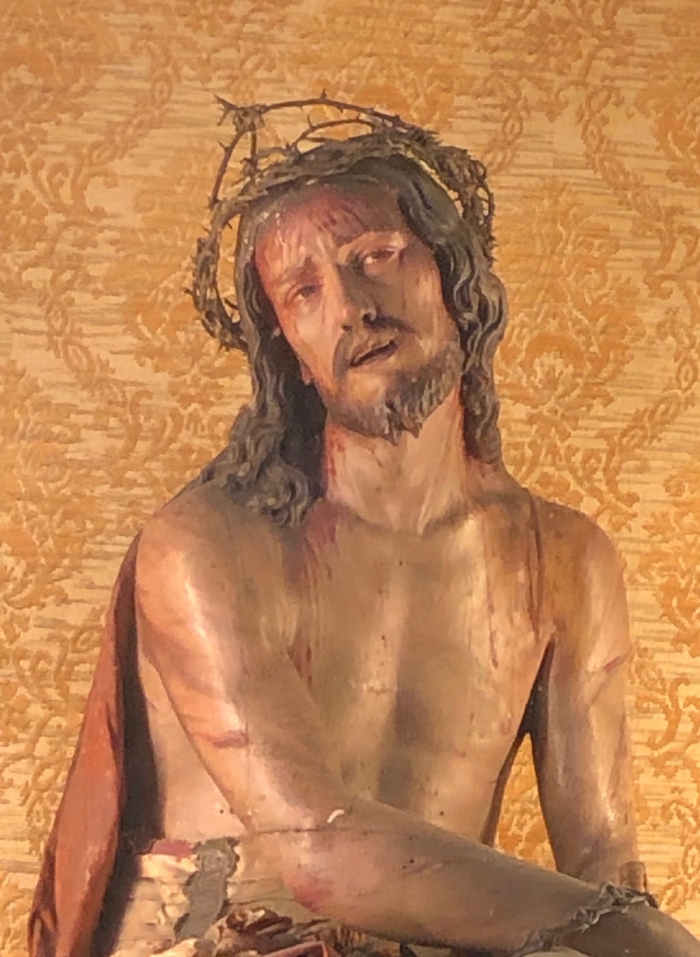
And there is the former convent that houses now a museum with a lot of beauty. I want to share some of the fresco's by Fra Bartholomeo on the ground floor: Jesus, Mary Magdalene, John the Baptist and a beautiful child with mother:

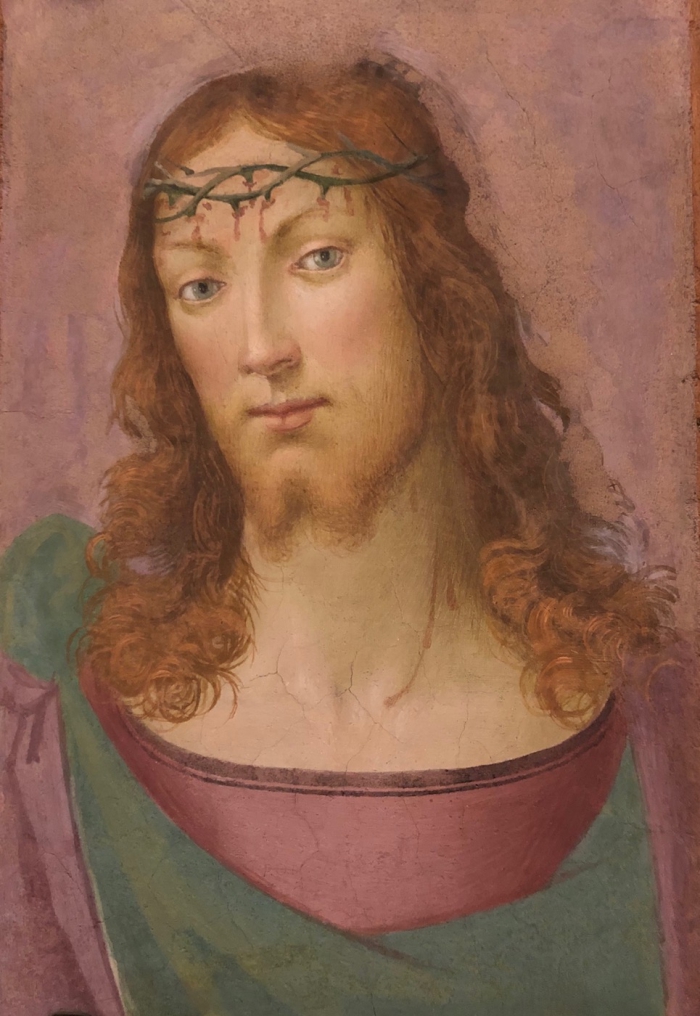
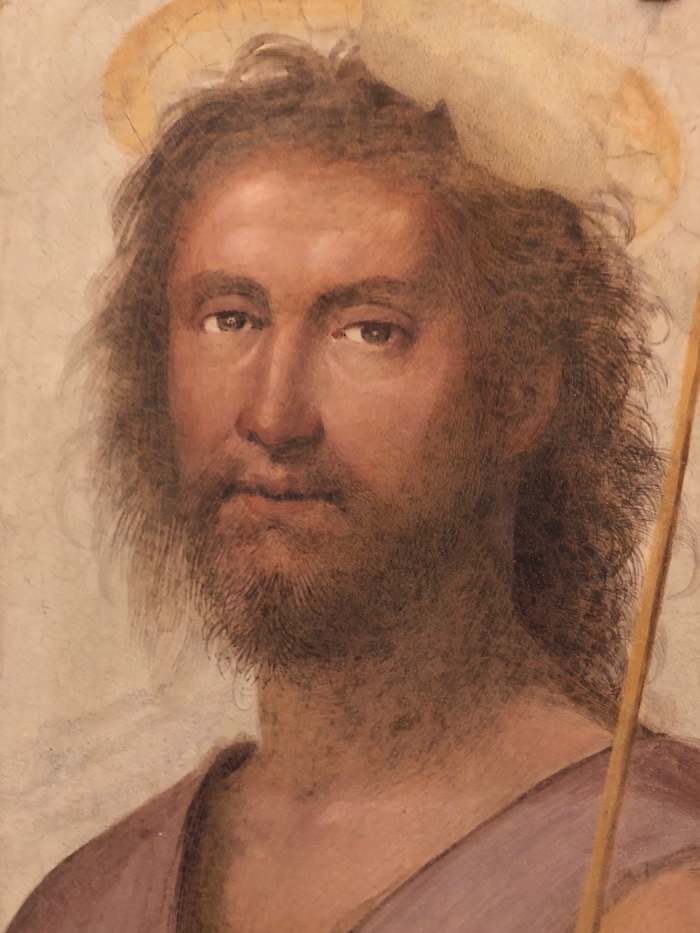
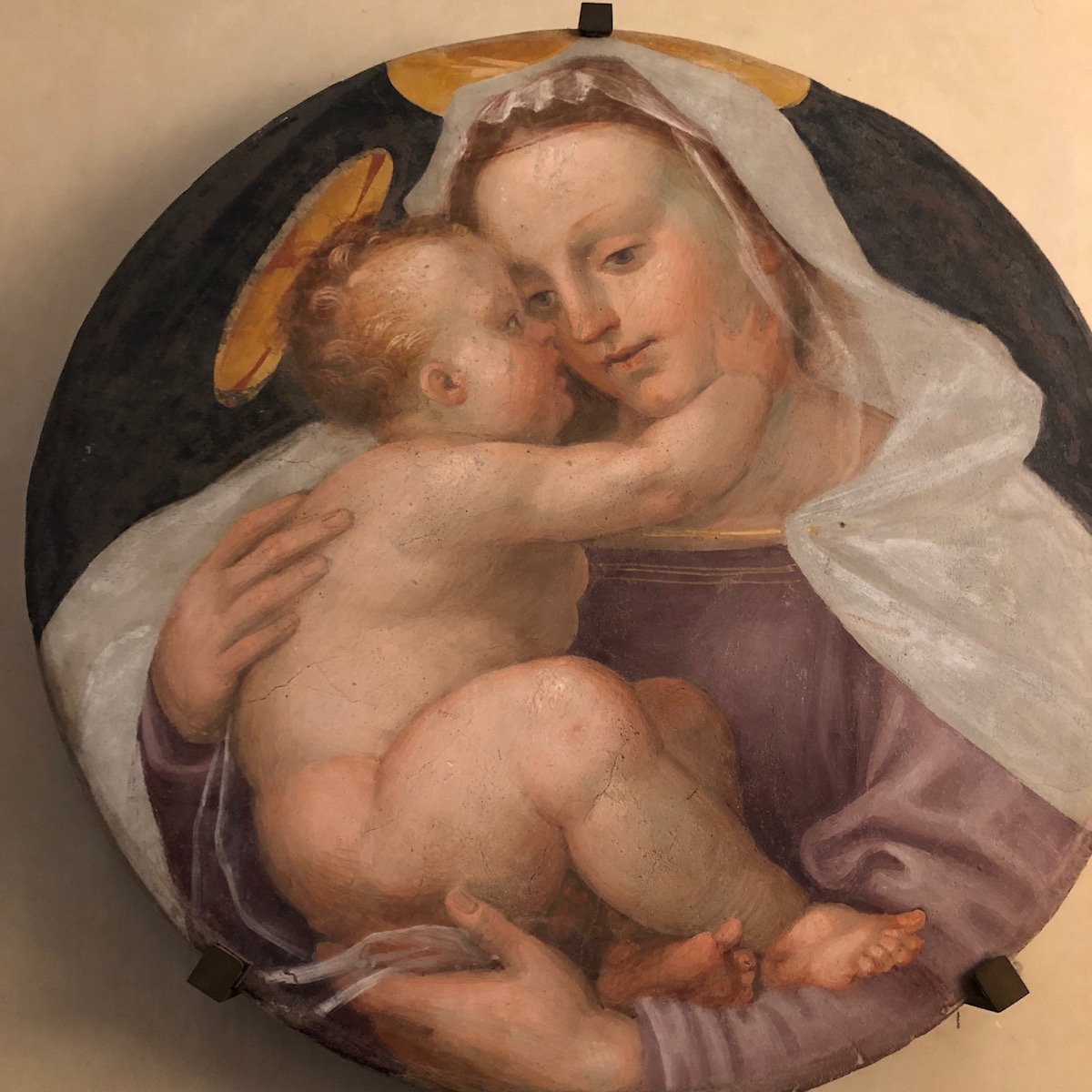
The cells of the monks
And then on the second floor are the cells where the monks lived. In every cell there is a specific fresco on the wall. it is beautiful!
So, here are some I found extra-ordinary:
Mary Magdalene at the empty tomb with Jesus arisen and in the next painting Jesus letting Mary know not to touch him as he is in the Otherworld.
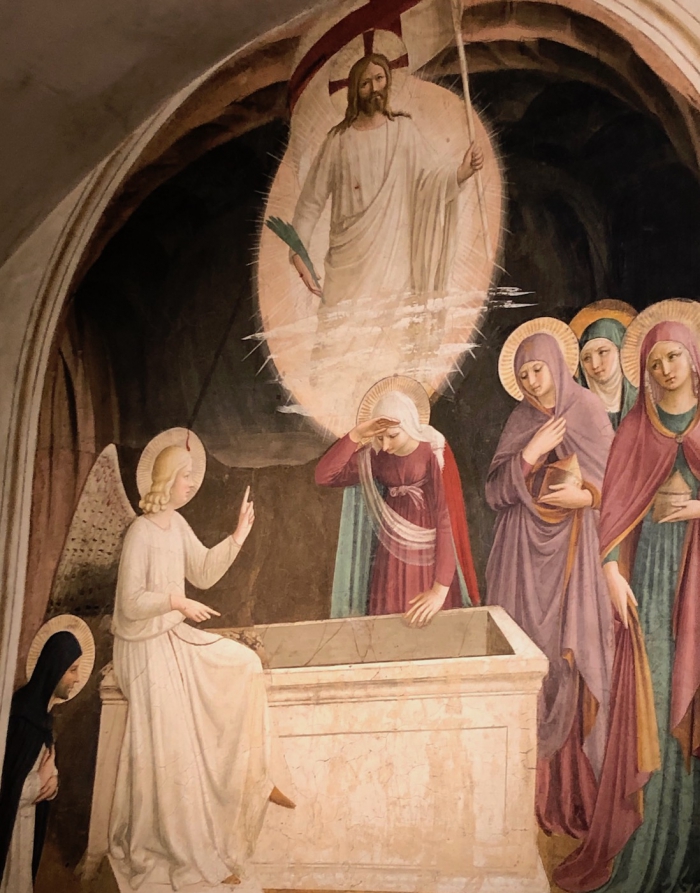

The Uffizzi Gallery
In this Gallery many works of famous artists has been gathered over many centuries and it covers several periods. I am mostly interested in the Renaissance which I find an interesting period in our history.
While the focus in the paintings is still on the sacred reality, we see also nature and daily life appearing. In this way the sacred becomes more part of life itself. I like the paintings of Boticelli, Beato Angelico and Philippo Lippi. You not only see an image; the sacred itself is transmitted through the direct experience of the painter. It is the inner awareness of the painter that is expressed in the work.
There is too much to share but here are some of my favourites:
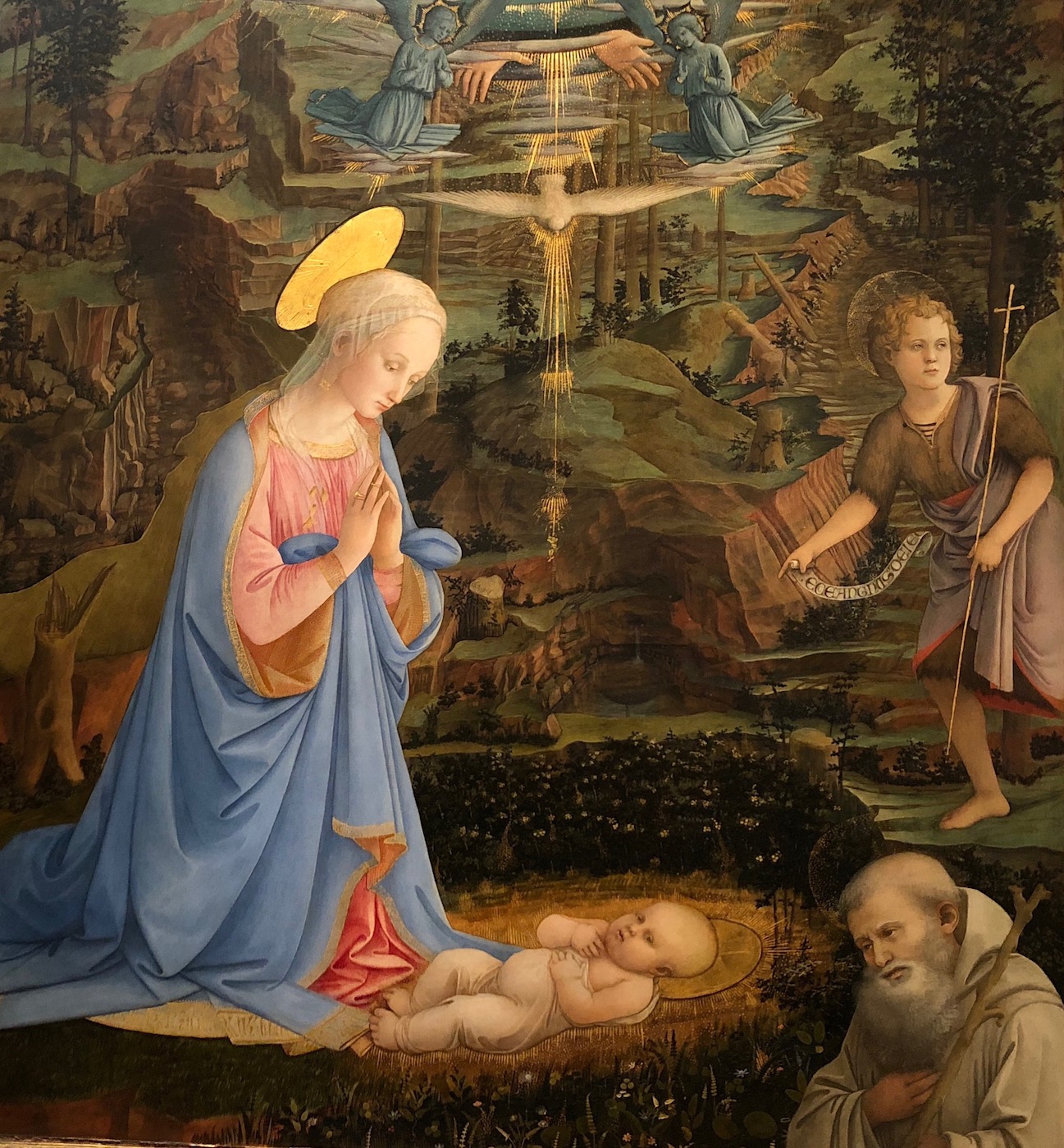

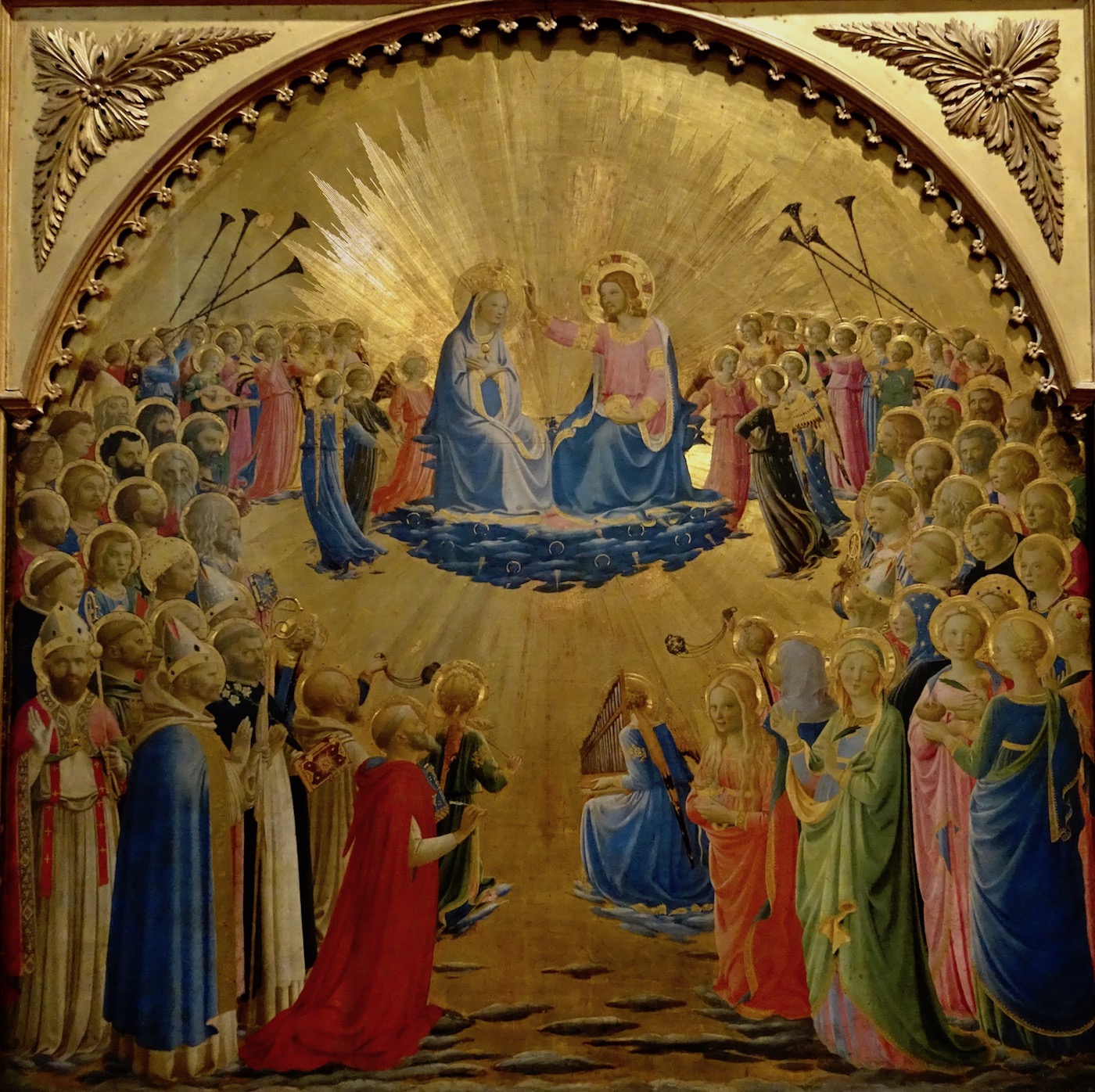
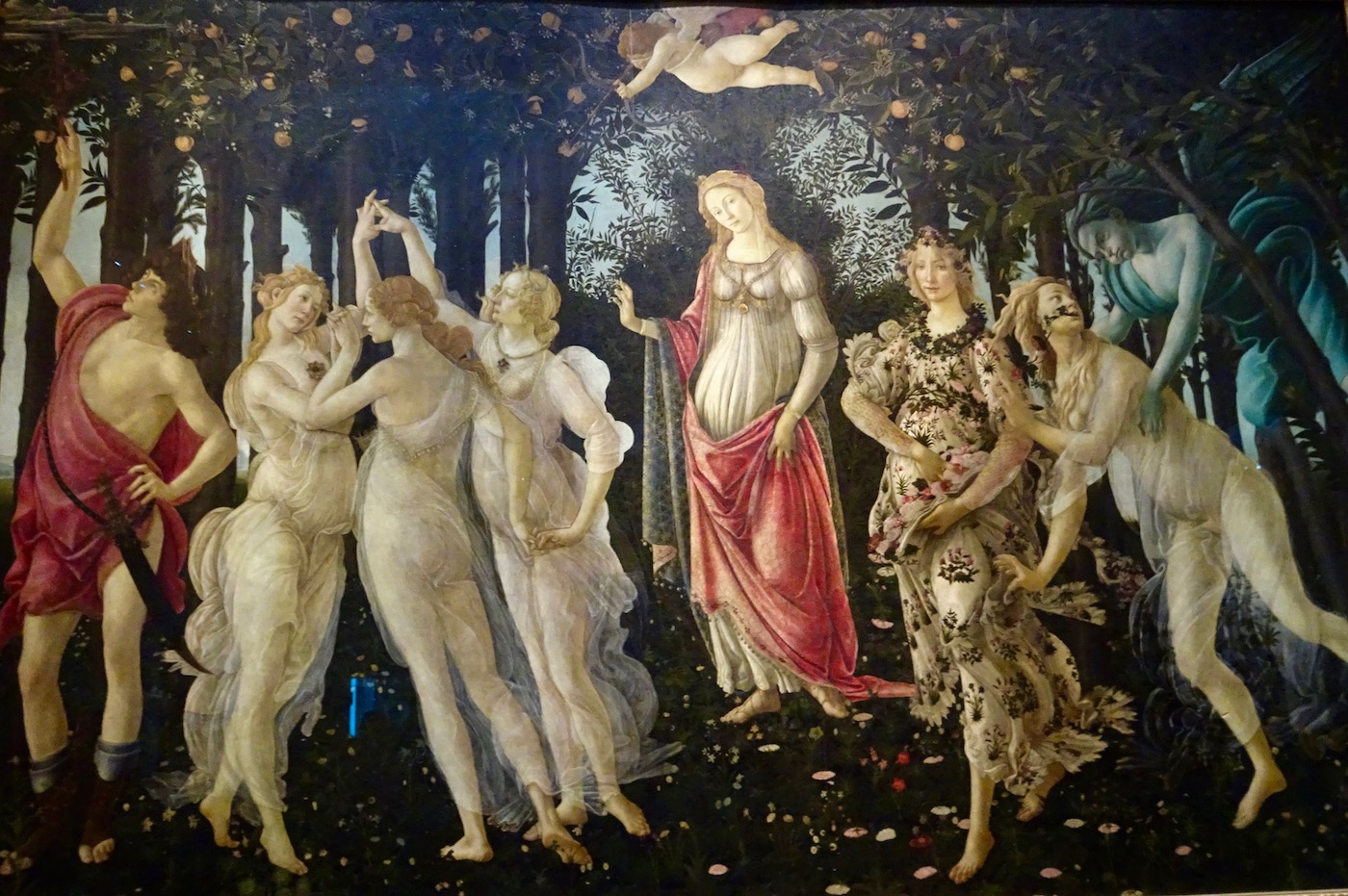
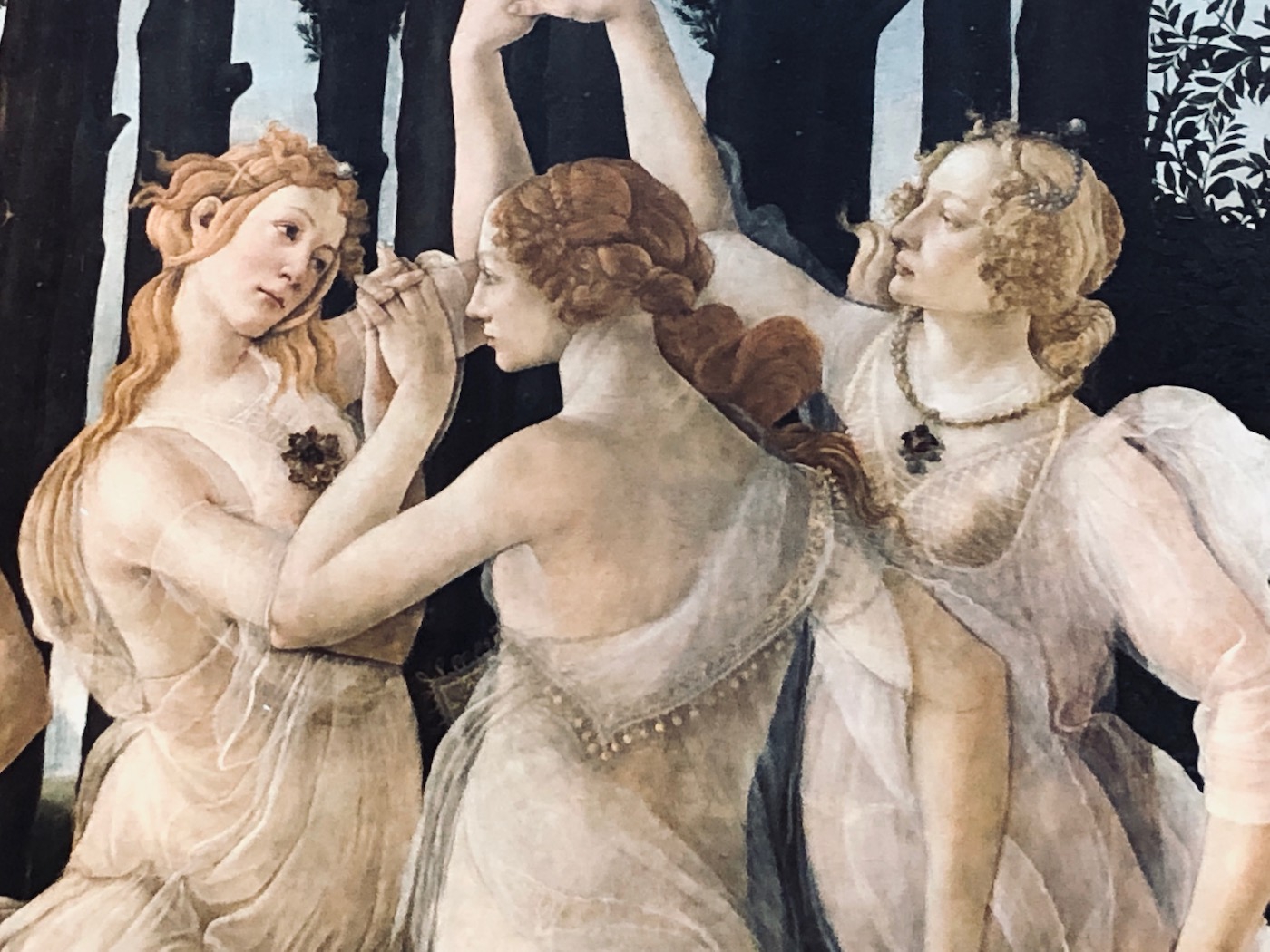
Donatello
Donatello is one of the famous sculptors. One of his sculptures is really interesting. it is a statue in wood where he depicts Mary Magdalene in a forlorn, desperate mood, old and lonely. It is easy to name this statue as Mary the prostitute or the sinner, as she is still often named.

Kathleen McGowan has a different view on this statue. According to her vision, Donatello made here a Mary Magdalene who is suffering because of the way she is seen by the church. Looking at the apocryphal books, the ones that has been discovered during the last century, she was Jesus Beloved. This statue is in the Museo dell'Opera del Duomo, a very interesting museum where are more statues by Donatello.
Churches
I visited many, many churches. Being inside the Duomo was a very interesting experience. In contrary to many of the other churches it is very sober, but standing in front under the huge Dome I experience a spaciousness that I have never experienced before, not in the desert or in the mountains. It is an amazing achievement to build this dome and it seems Brunelesschi knew what he was doing. From the inside of the church, looking up, you see the whole painted dome, made by many artists.
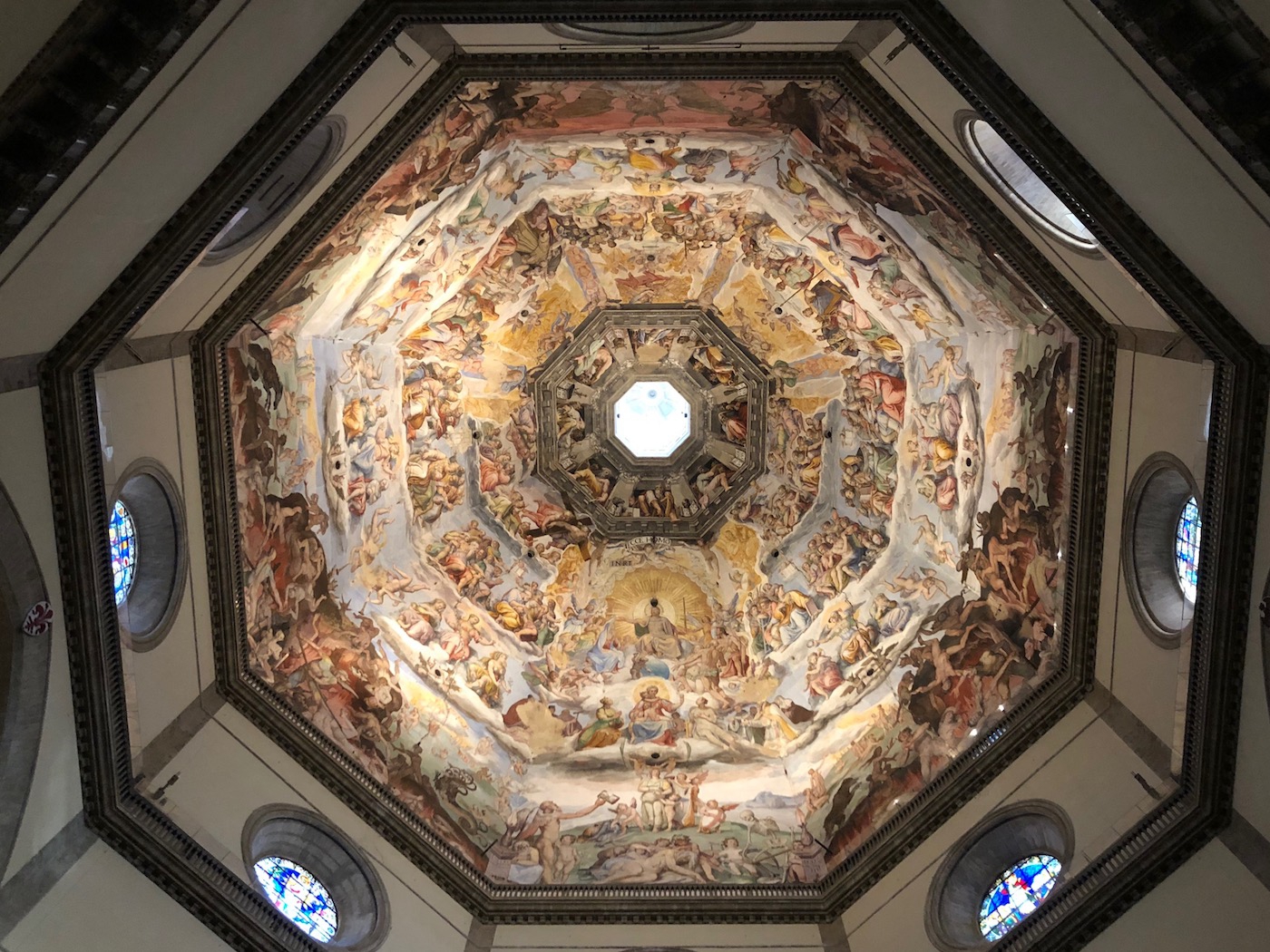
Many churches are very decorated and have murals that depicted scenes of the old and new testament set in the city of Florence of that time. The high altar have beautiful altarpieces and the vaults above the altar is completely painted.
Here is a photo of St Crocce, the high altar.
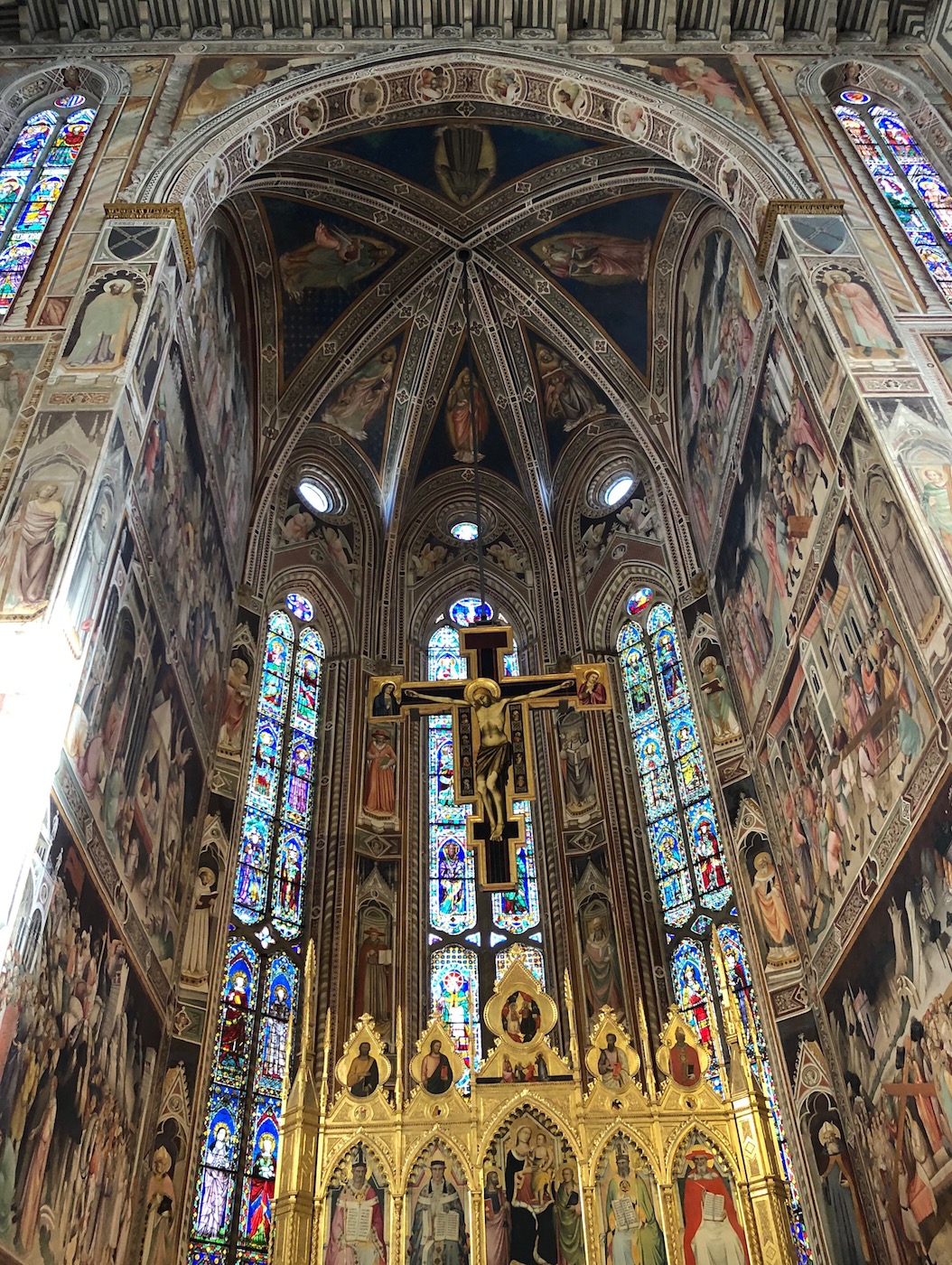
Fiesole
It is my last day here. Tonight at 10pm my train leaves from the central railwaystation. Having been in the city for six days now, I wonder about the landscape around Florence that I did not see upon arriving and will not be able to see when leaving. It is mainly this thought that makes me decide to take a trip to a nearby small place, Fiesole, that is well known from history.
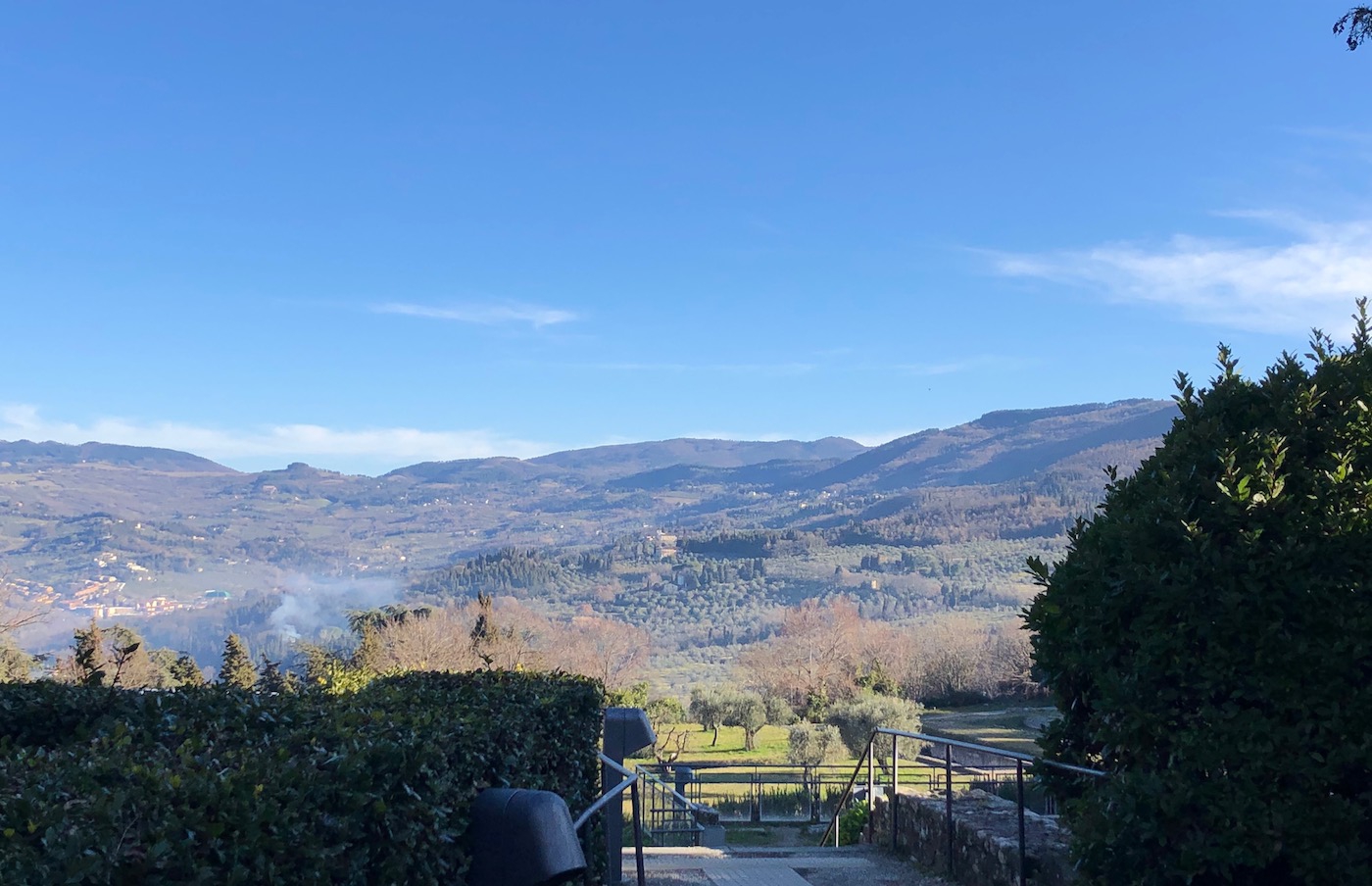
As I step out of the bus at its last stop, the quietude of the central piazza feels as an amazing gift. Here is the view of the hills around. Fresh air and stillness nourish my soul. A deep breath is taken. One more.
I find a cafe with a view on the hills already open. Then there is a visit to the cathedral, surprisingly sober. Another deep breath is taken in the huge grey, beautiful columns and the vaults in the crypt, above the altar, are exquisite.
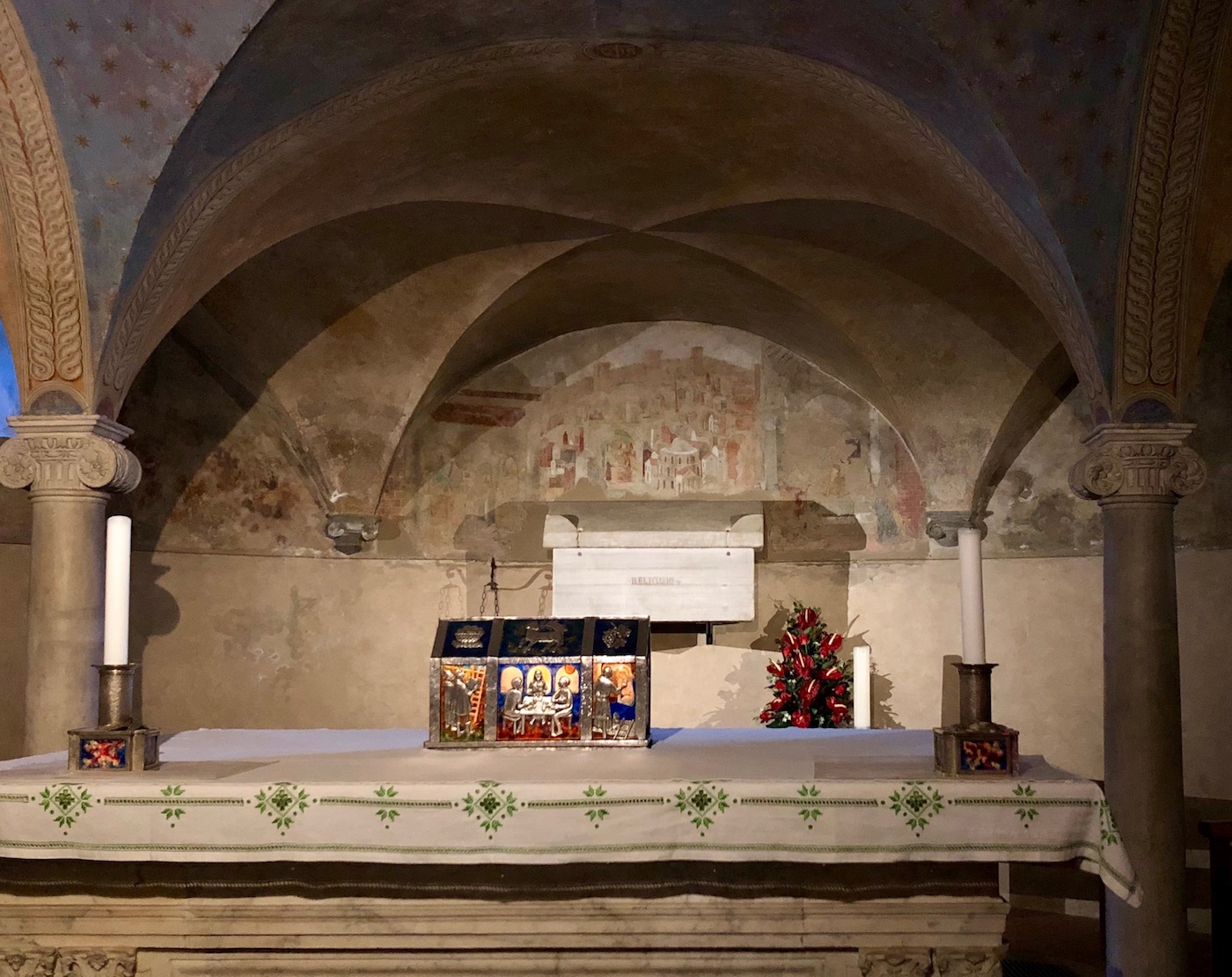
Then there is a short climb up San Francesco hill with a church and convent of the same name. There are views over the city but the air is hazy. San Francesco hill is a quite place with very nice atmosphere and I sit there in the sun for a long time.
Back to the city I find my way to the exquisite restaurant at the top floor of the Ospedale degli Innocenti. This place has been an orphanage for a long time and it is designed by Brunelesschi. It is a beautiful building in its own right. here I take a late lunch with a glass of white wine, sitting in the sun with a view over the city. It is a wonderful end of a wonderful journey.


